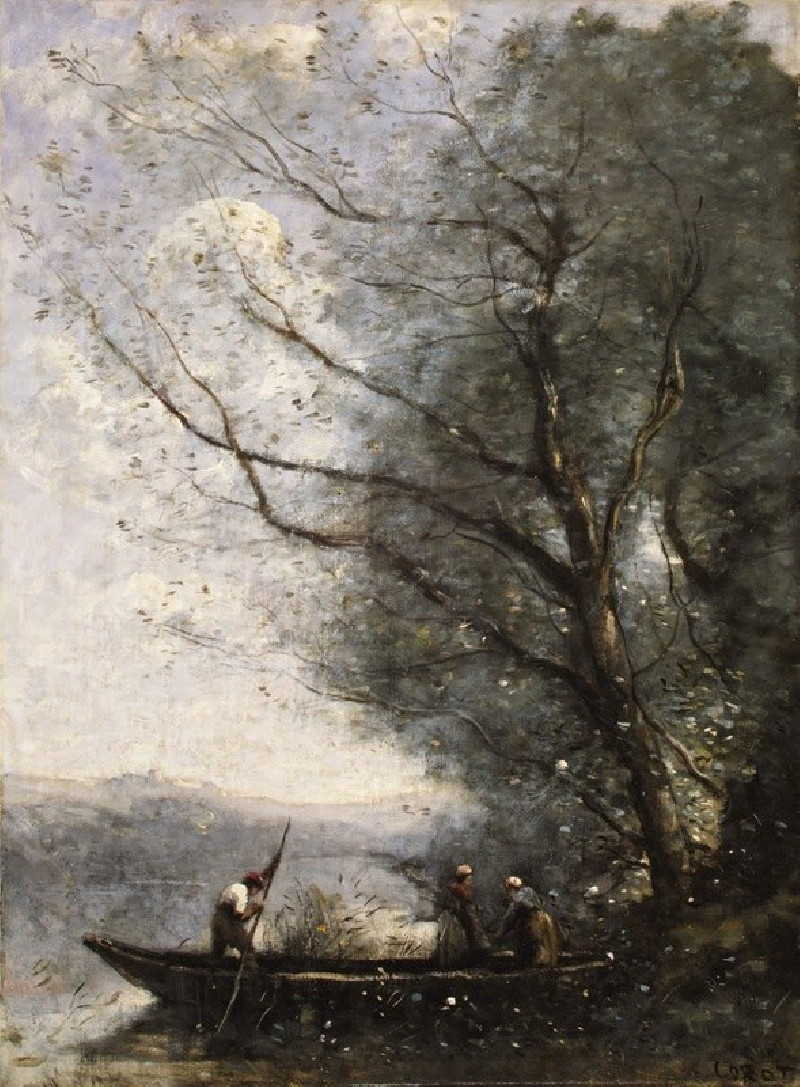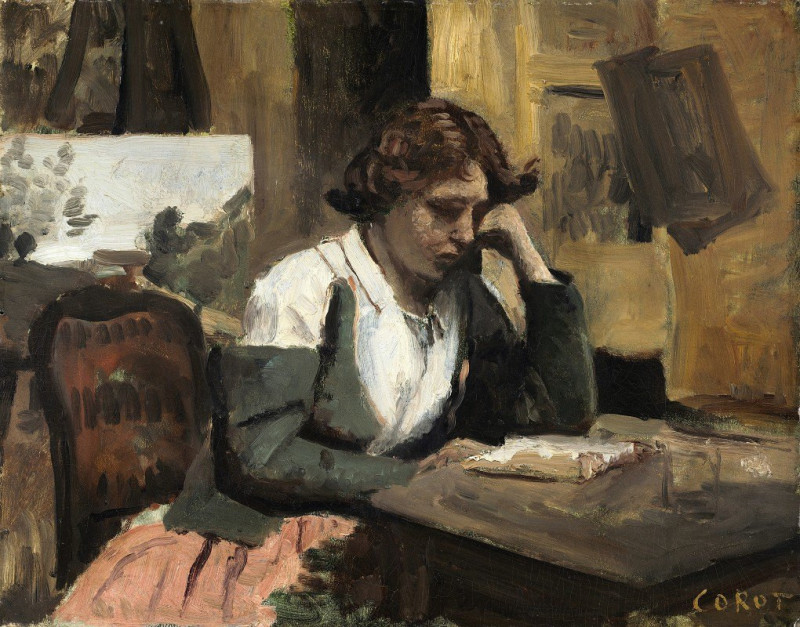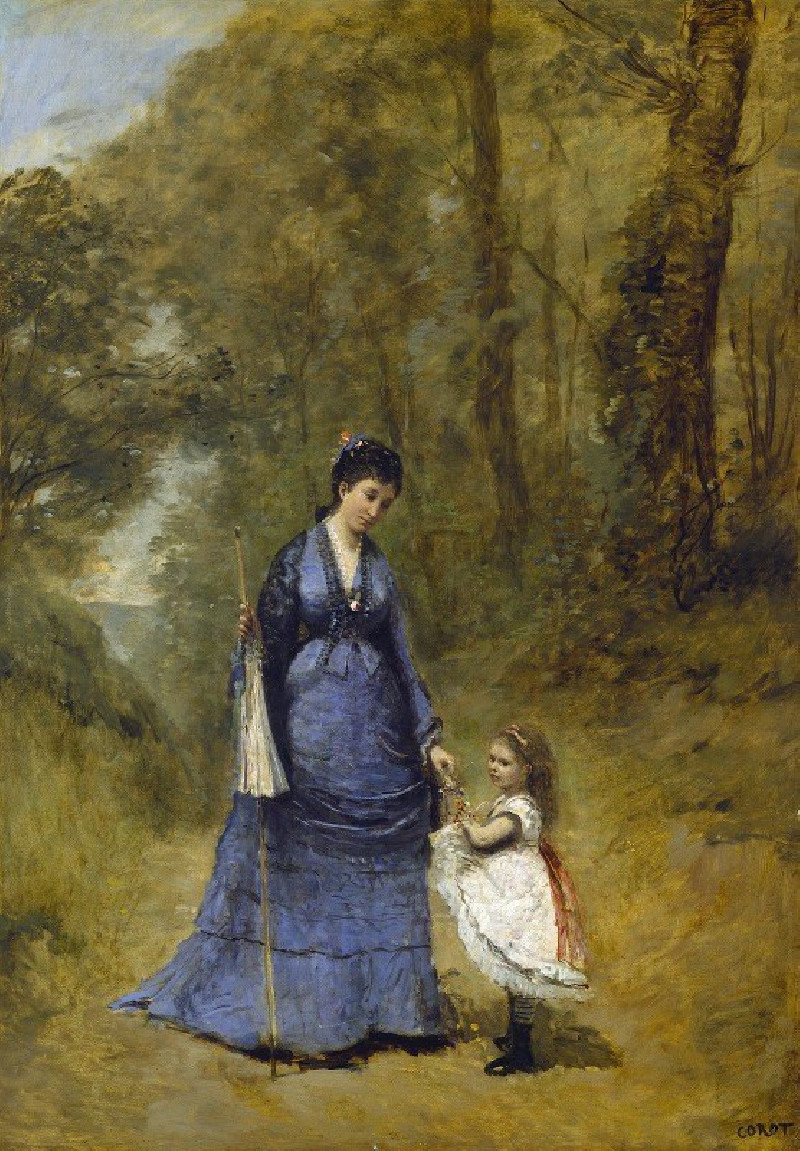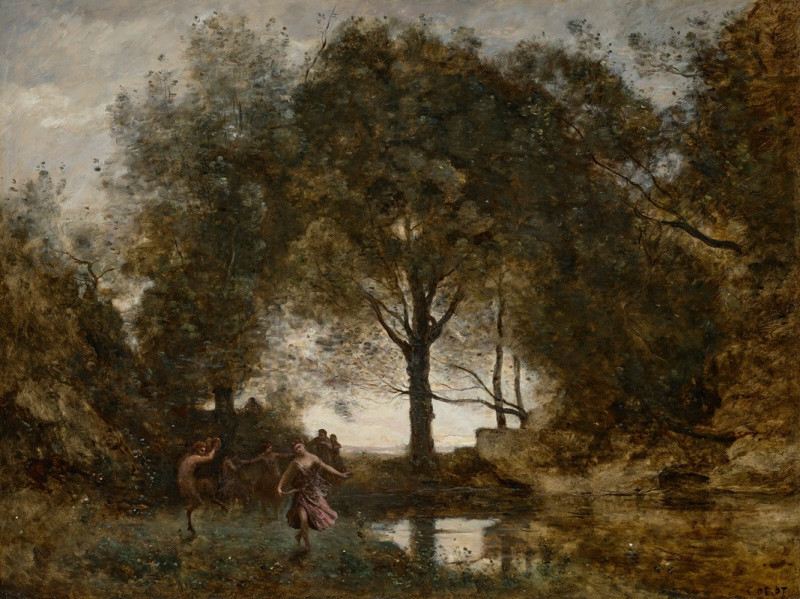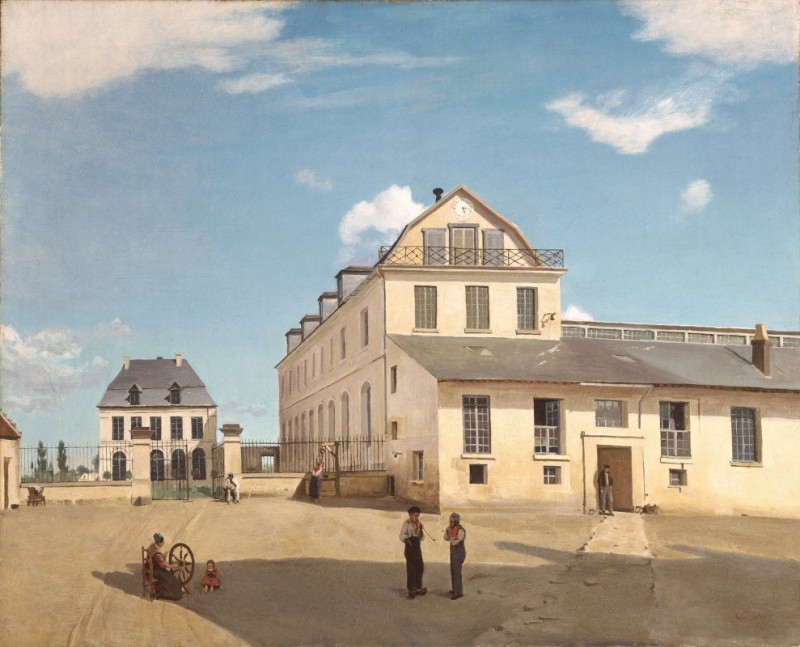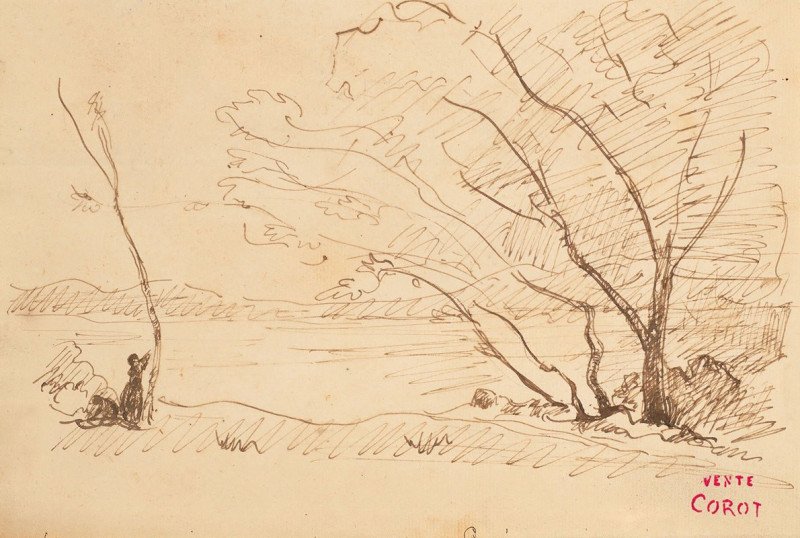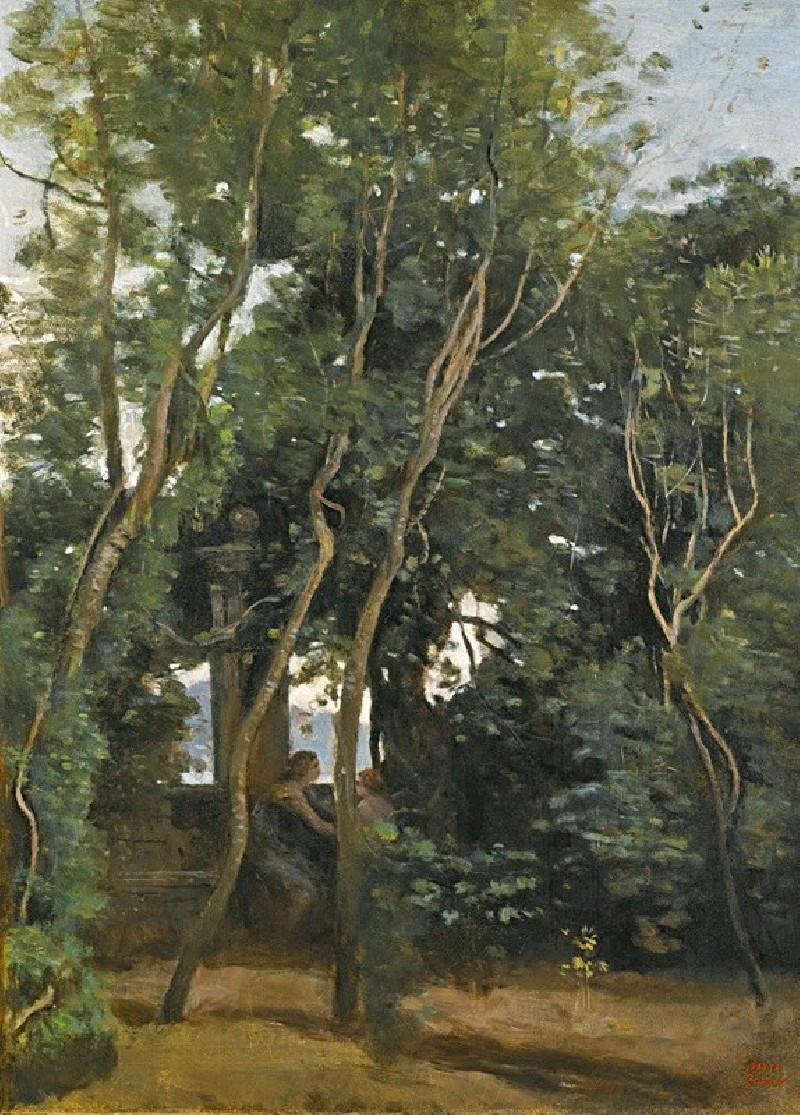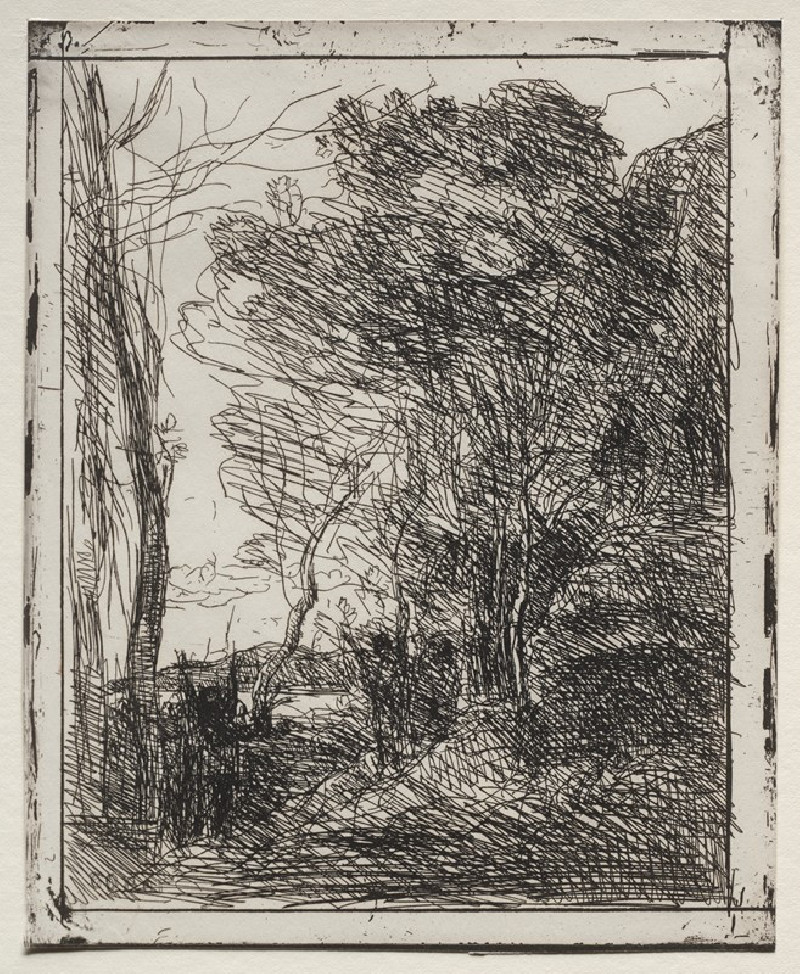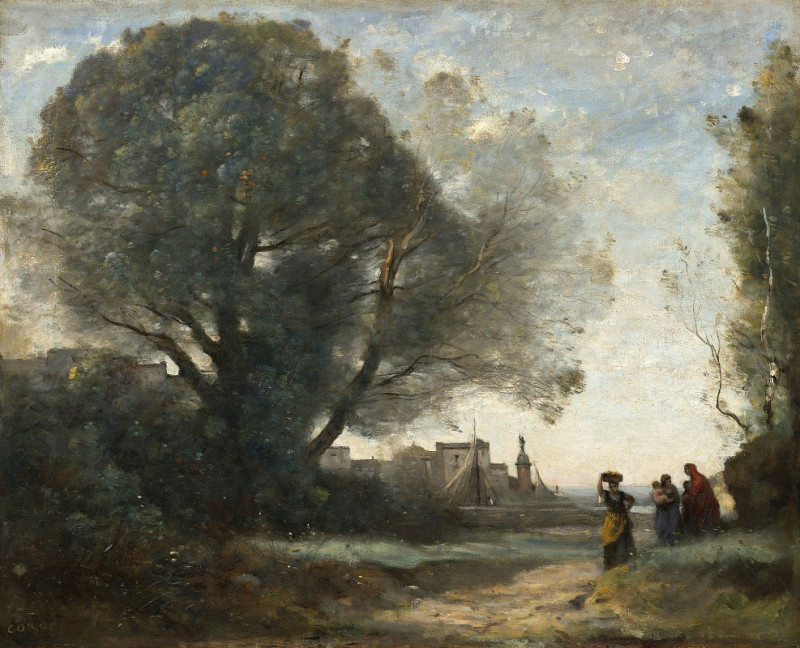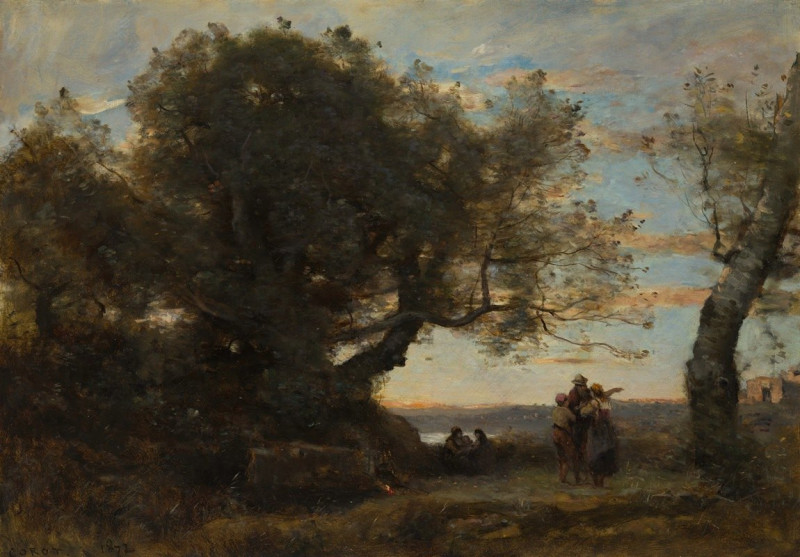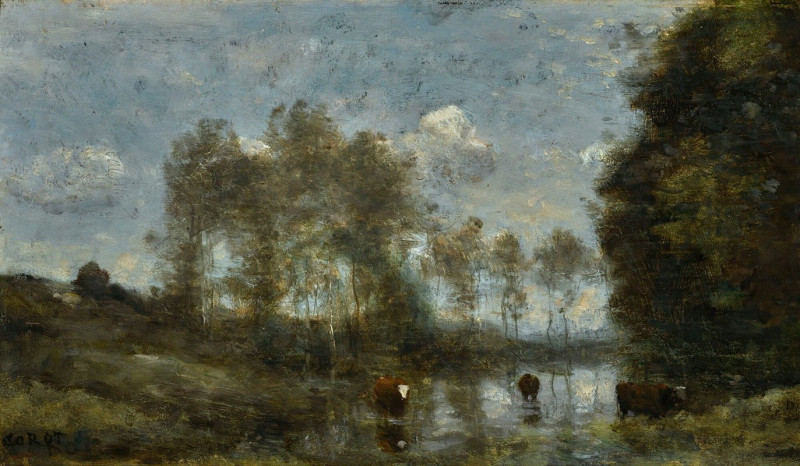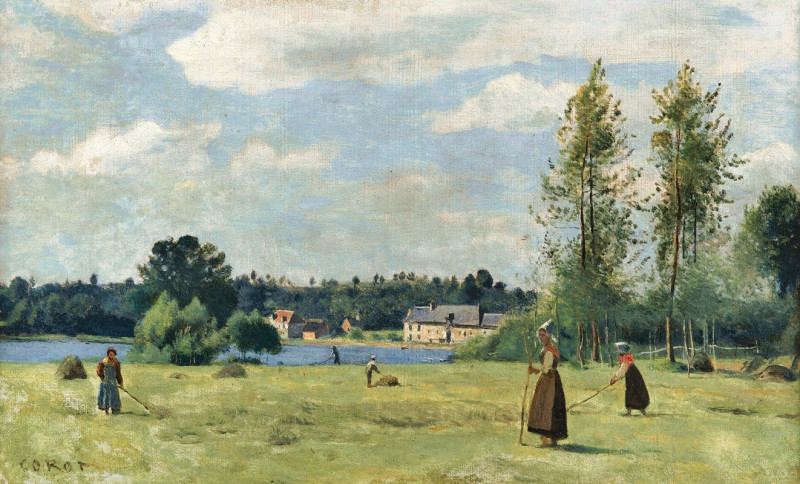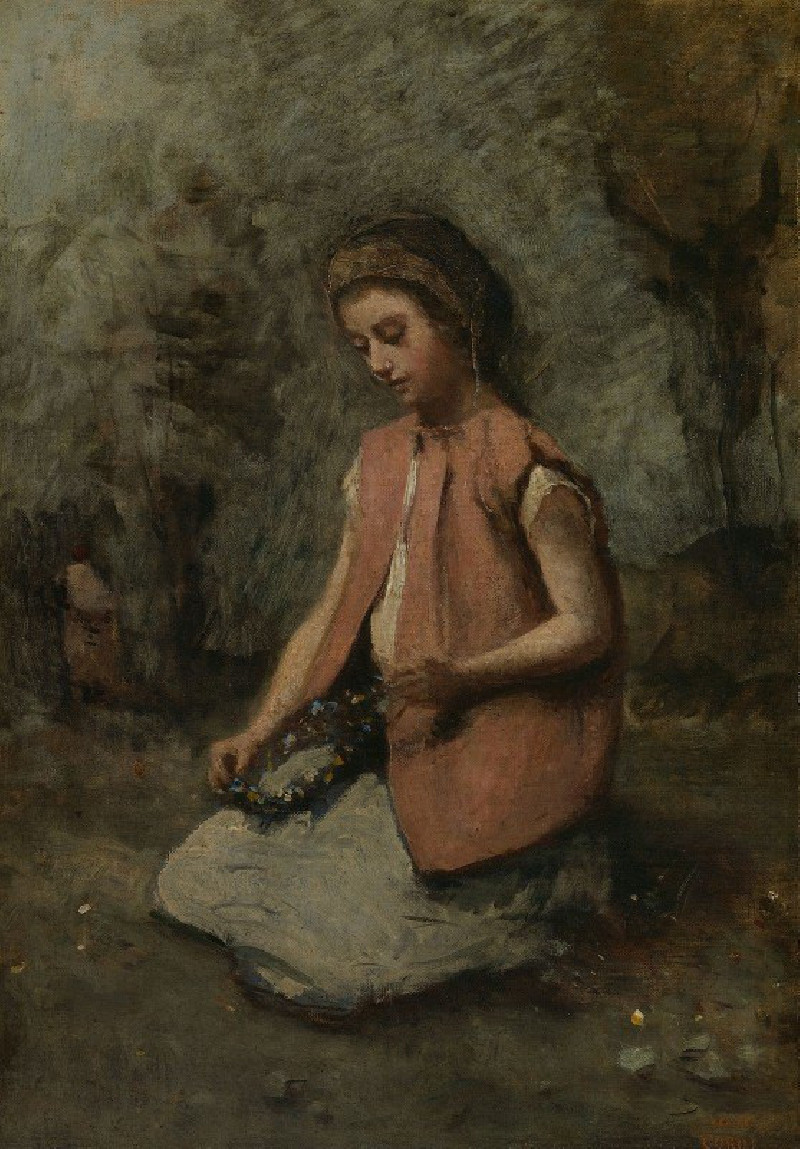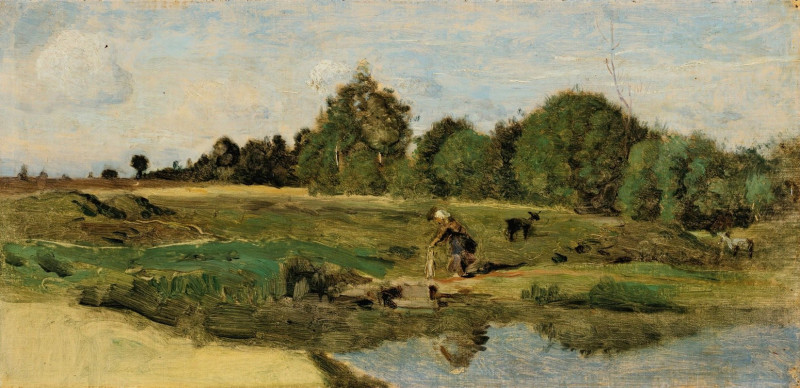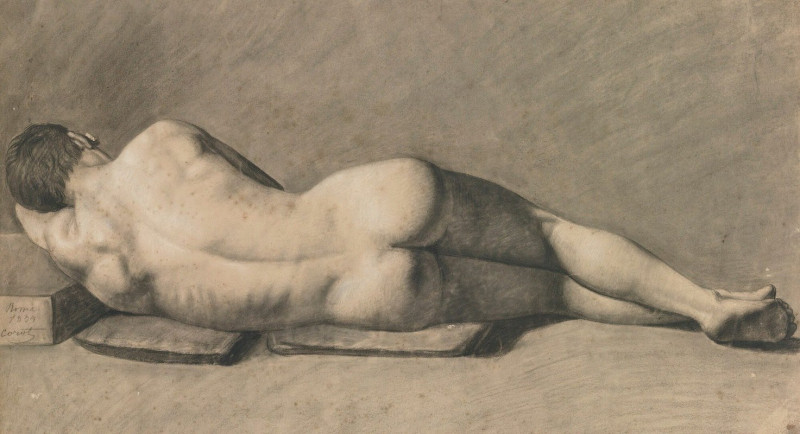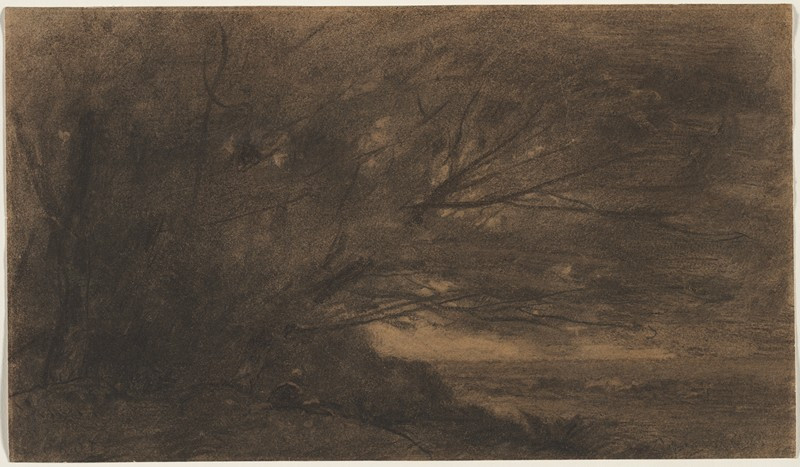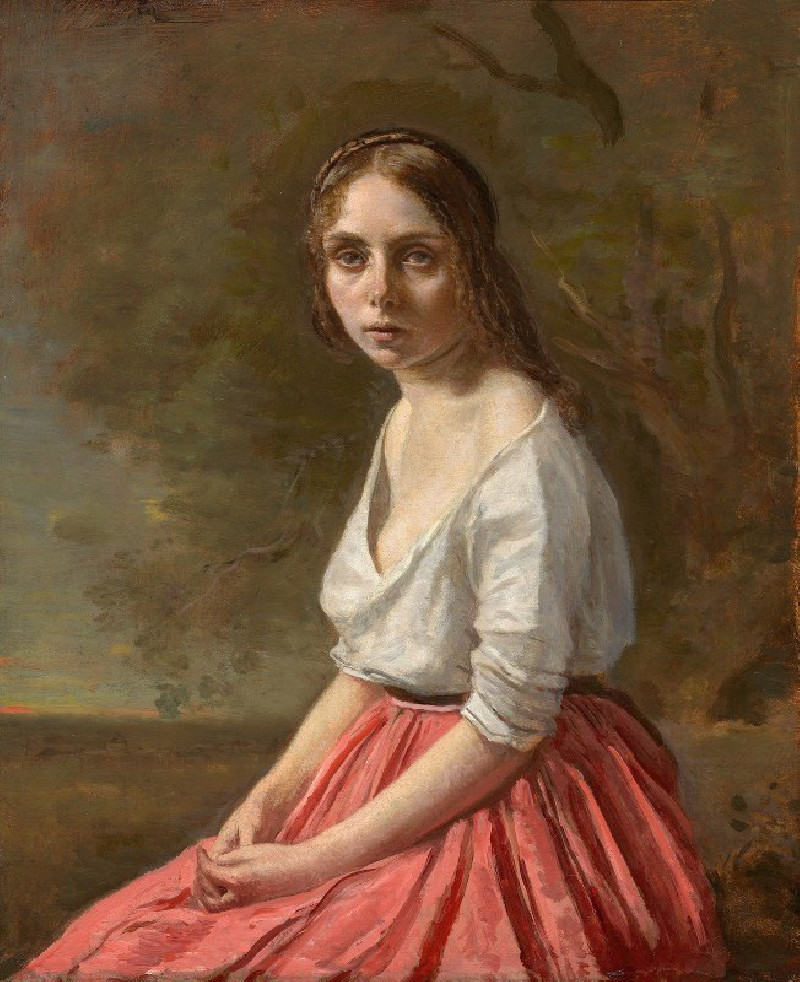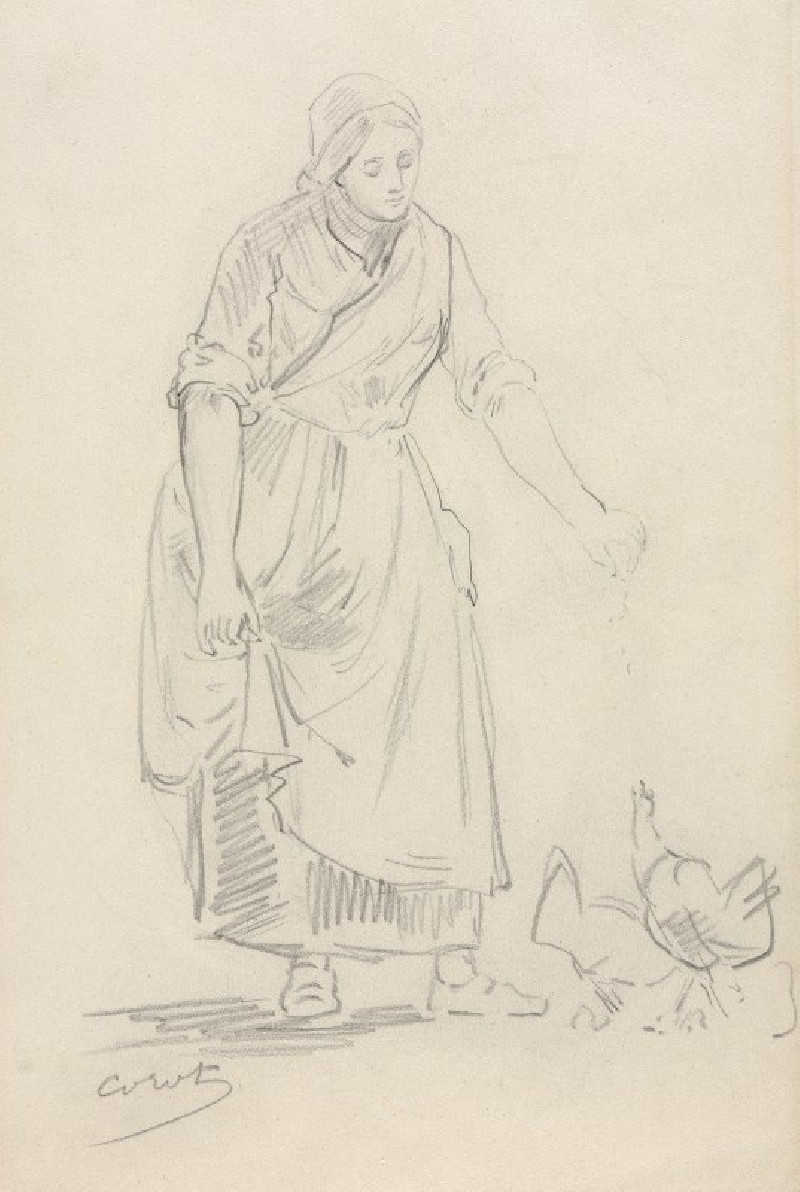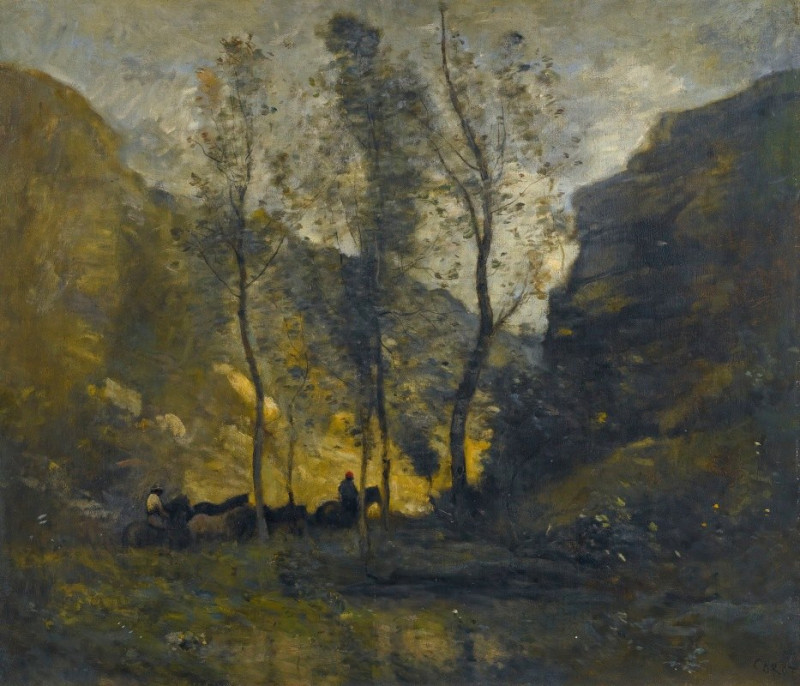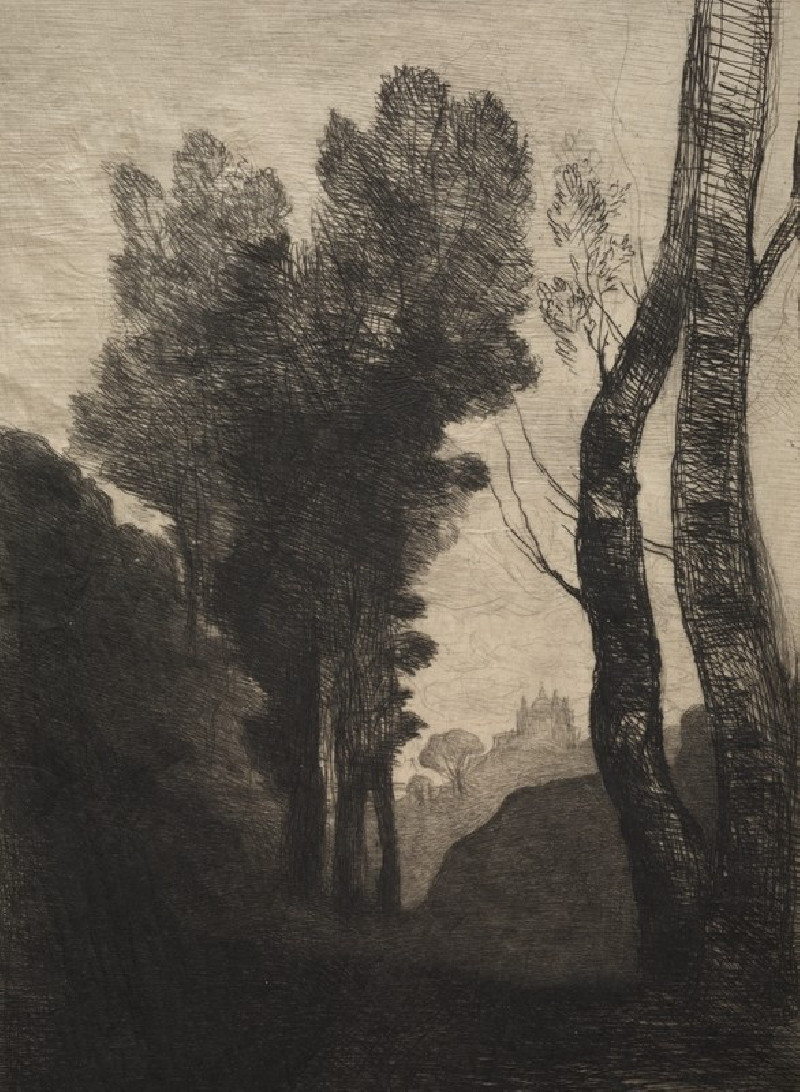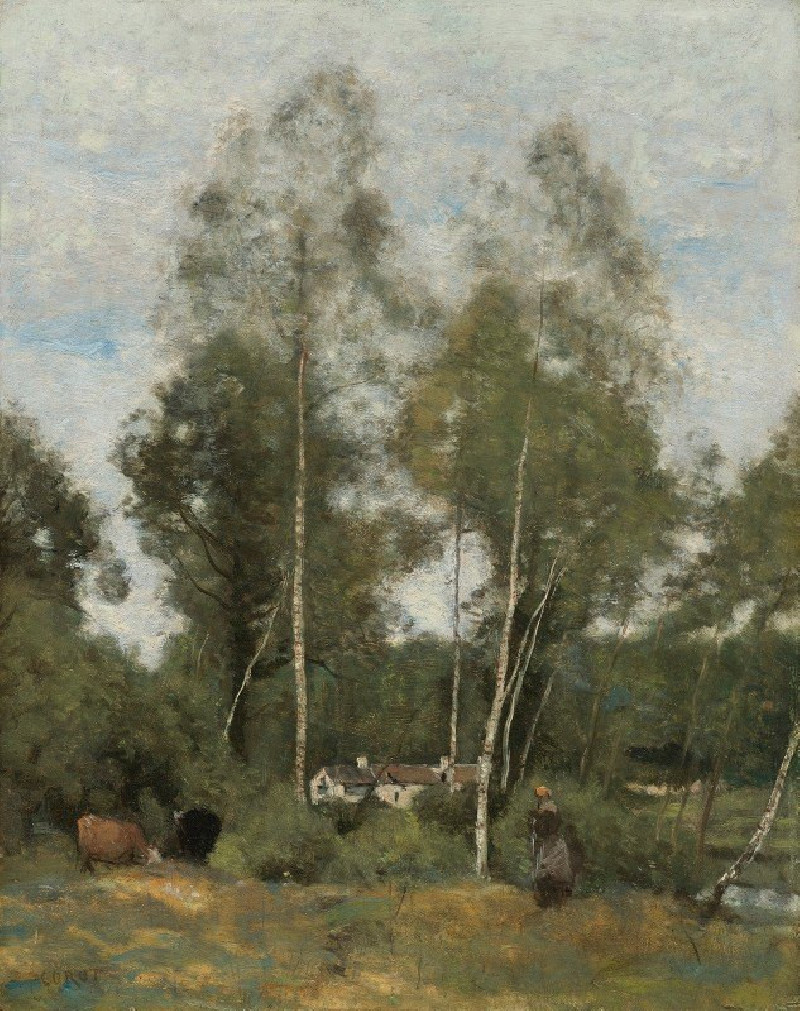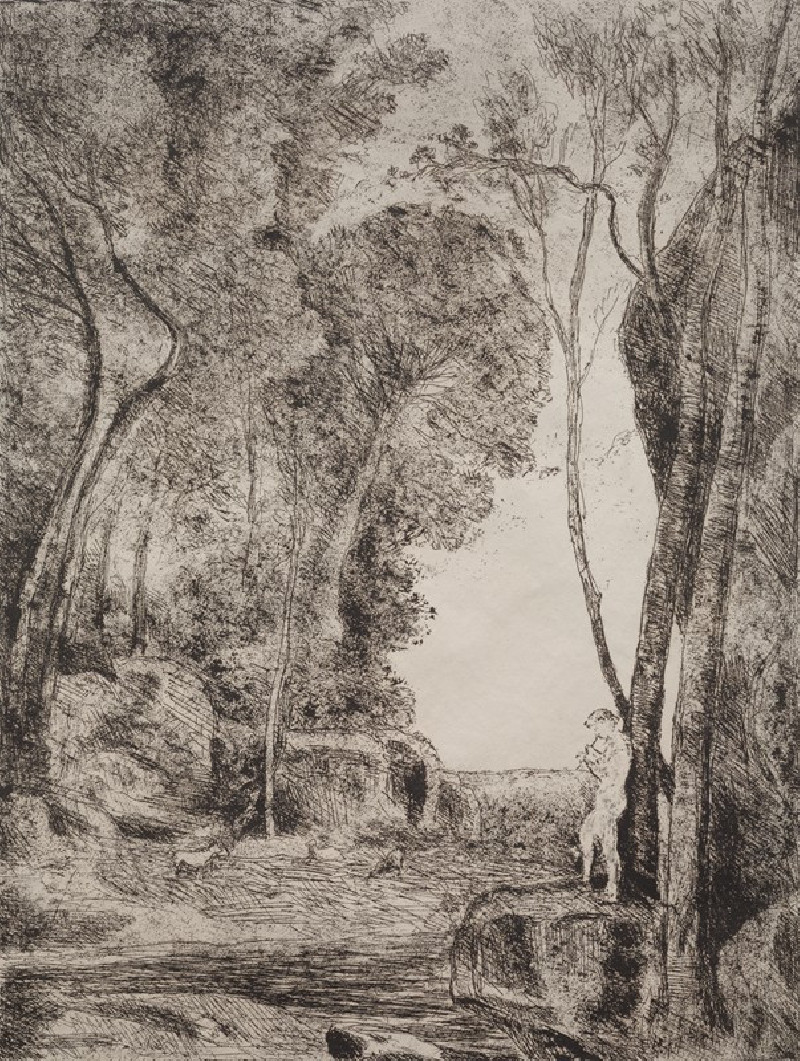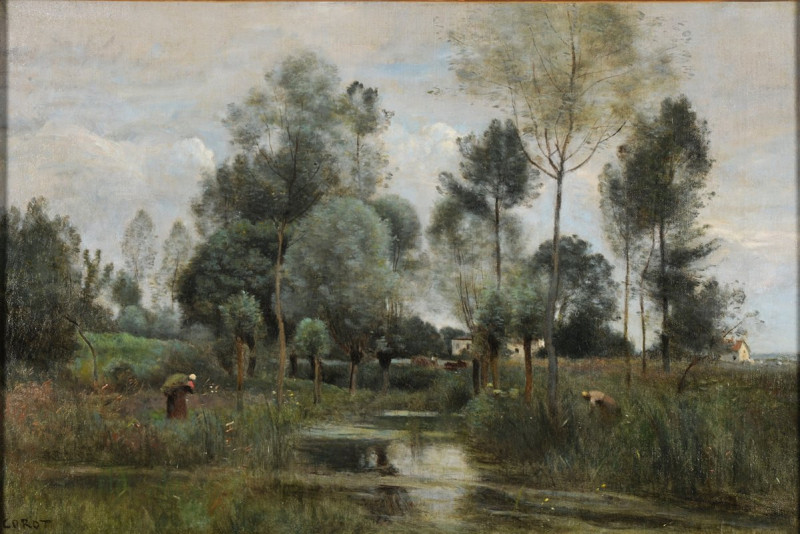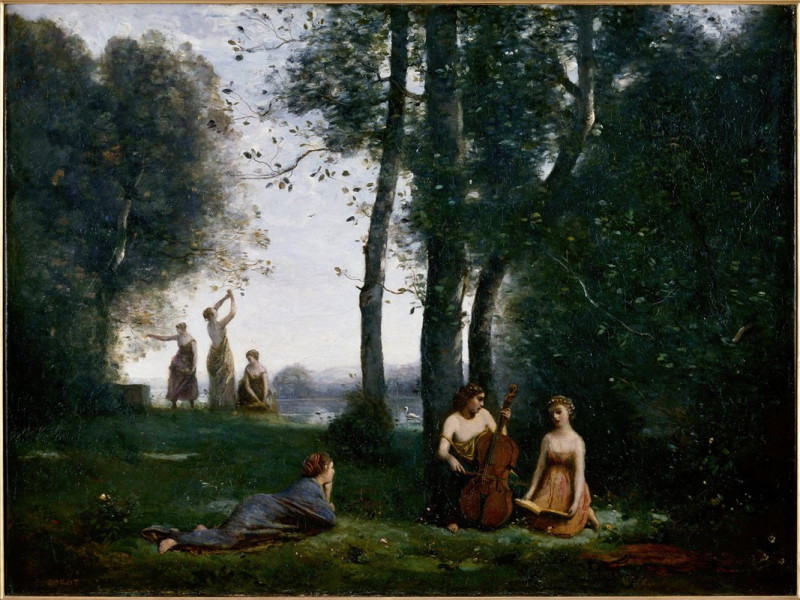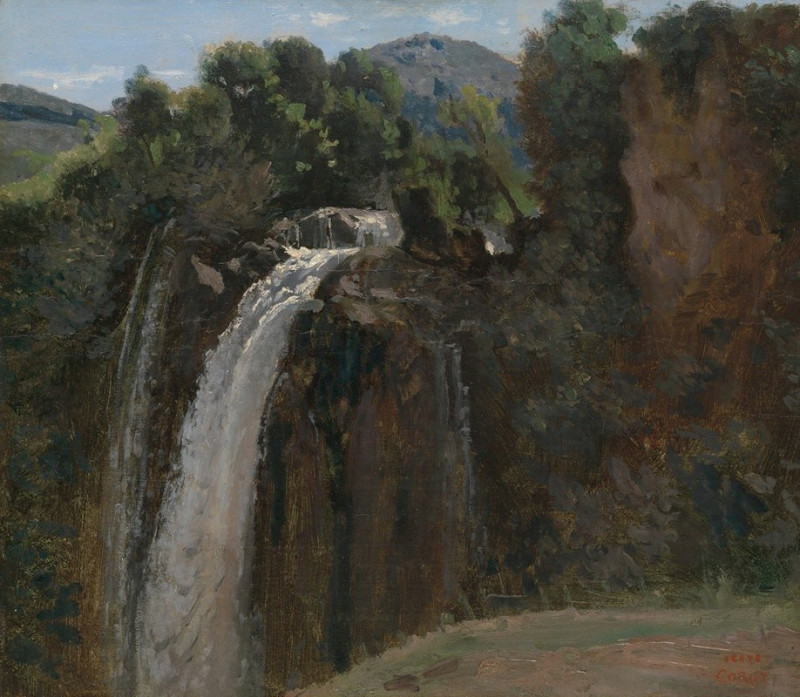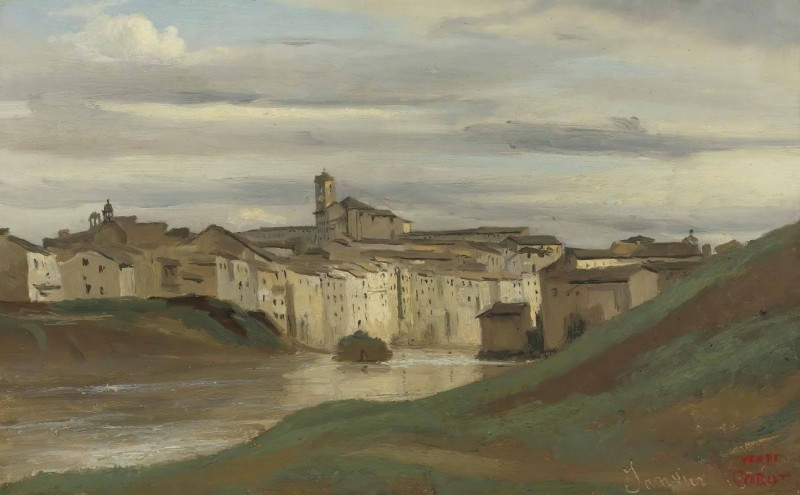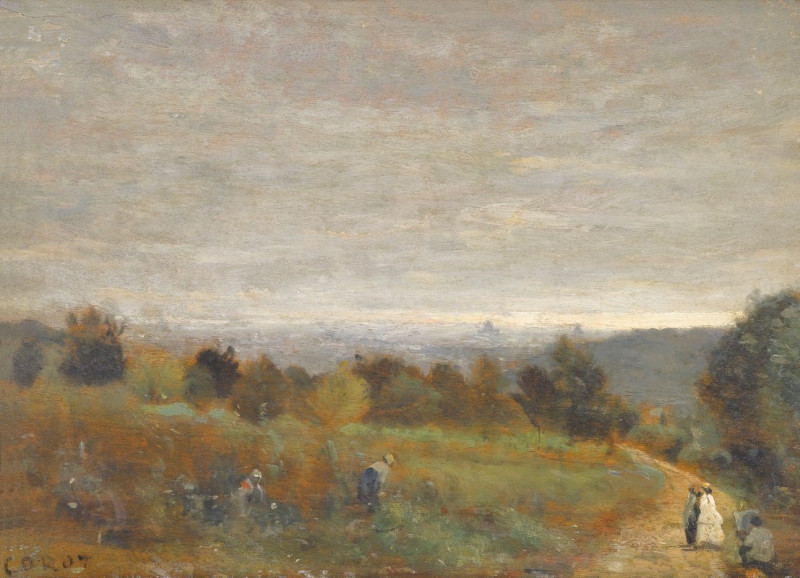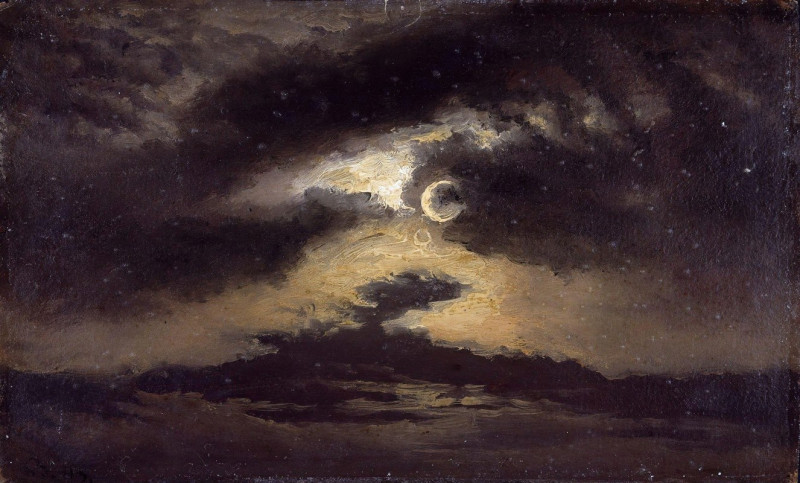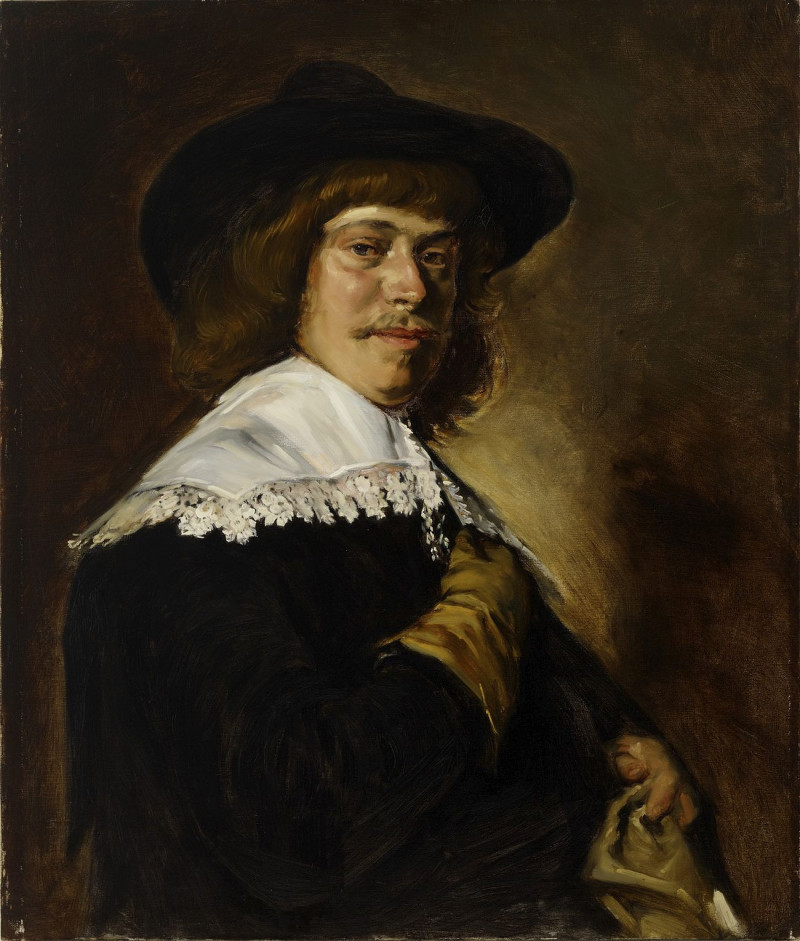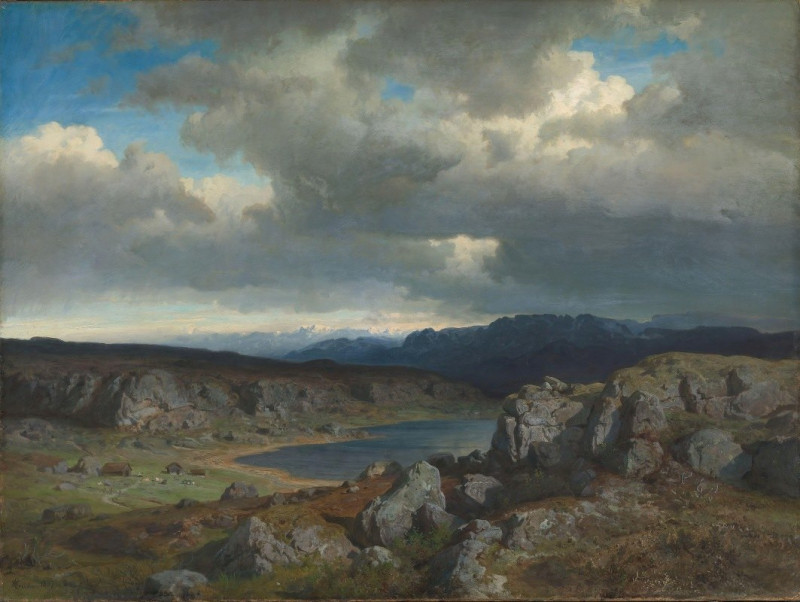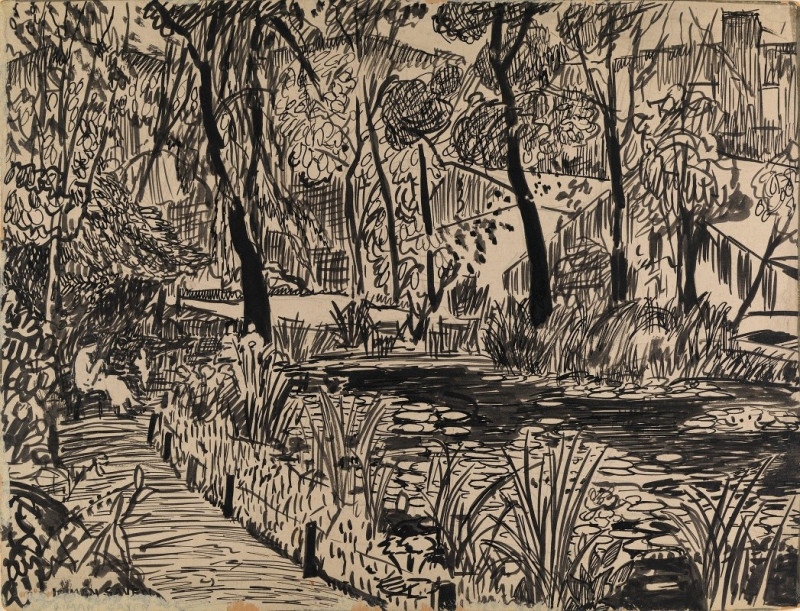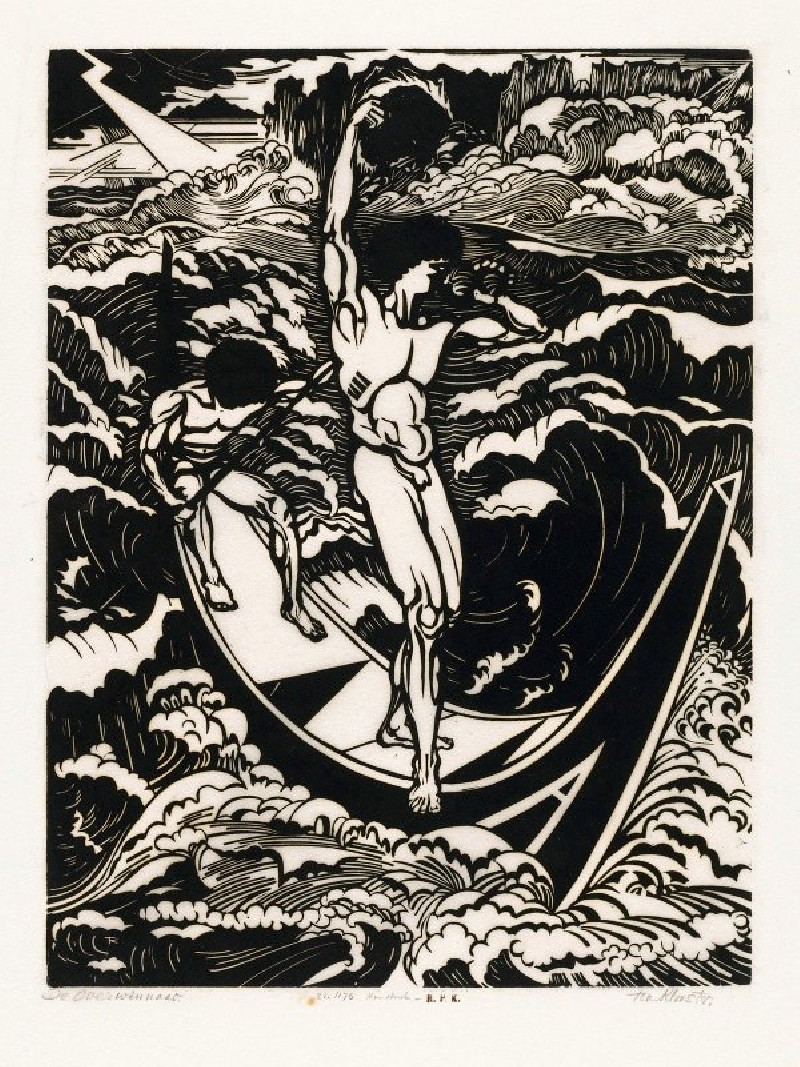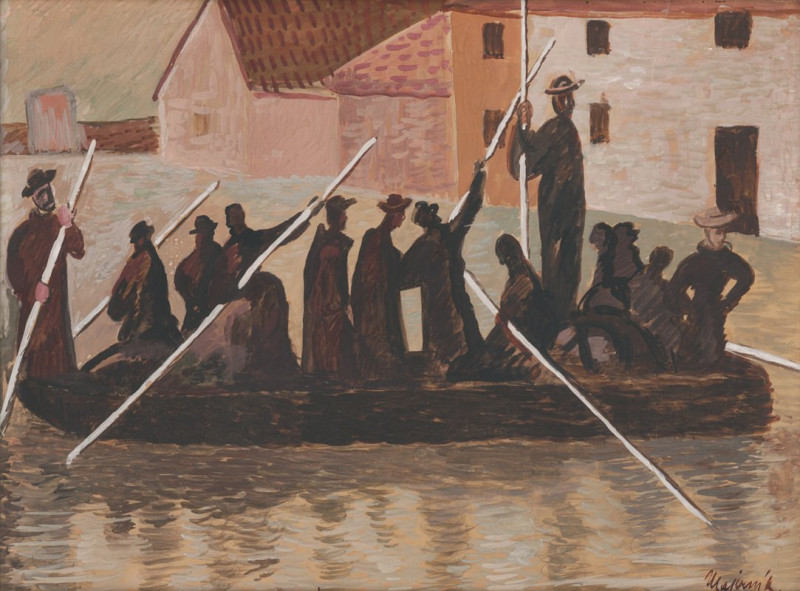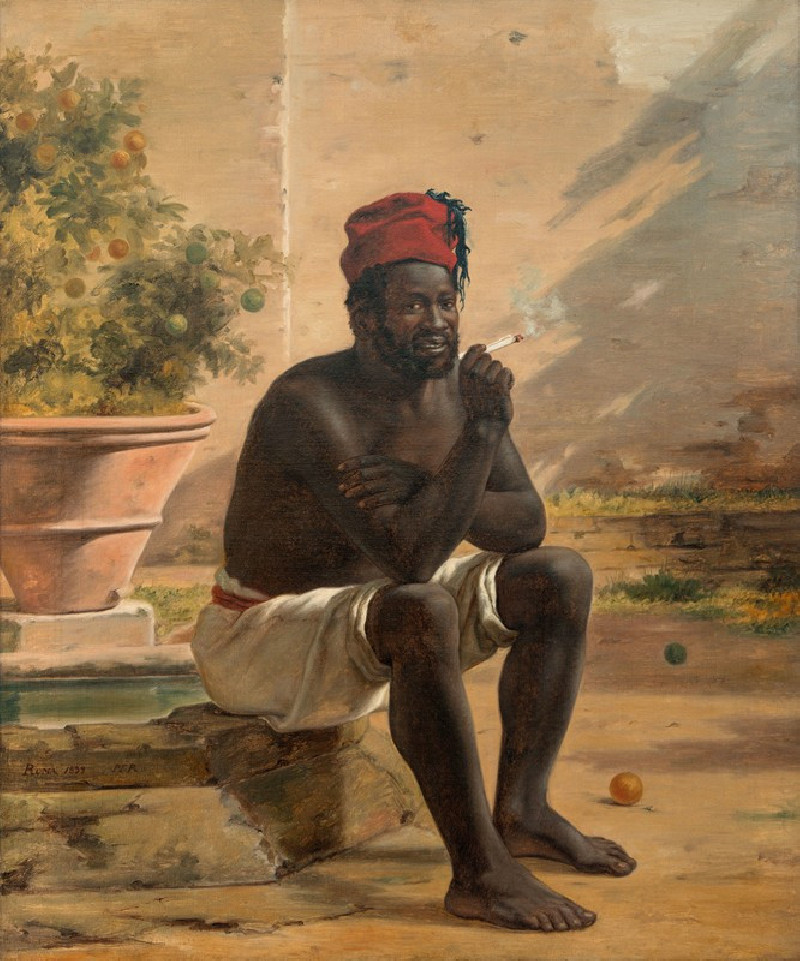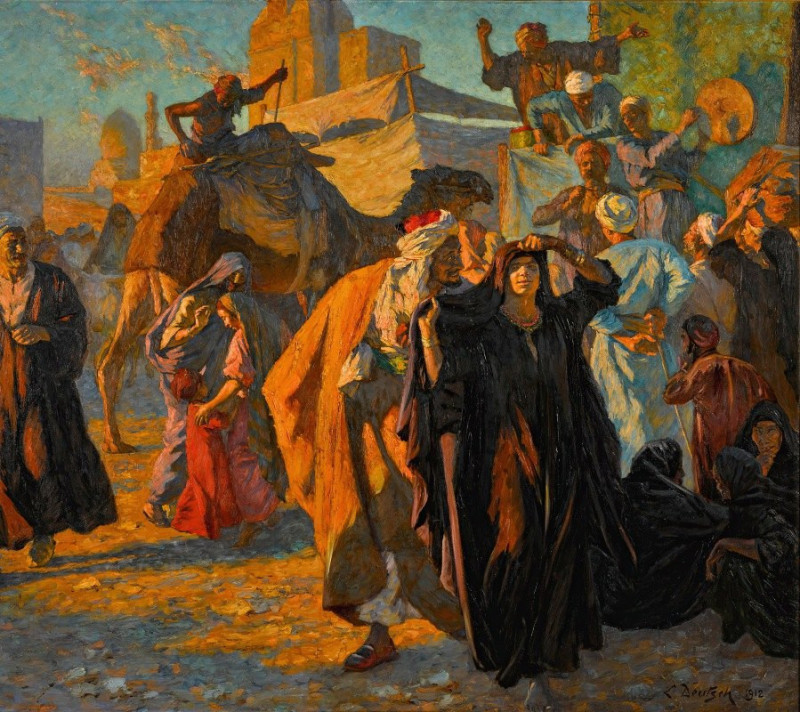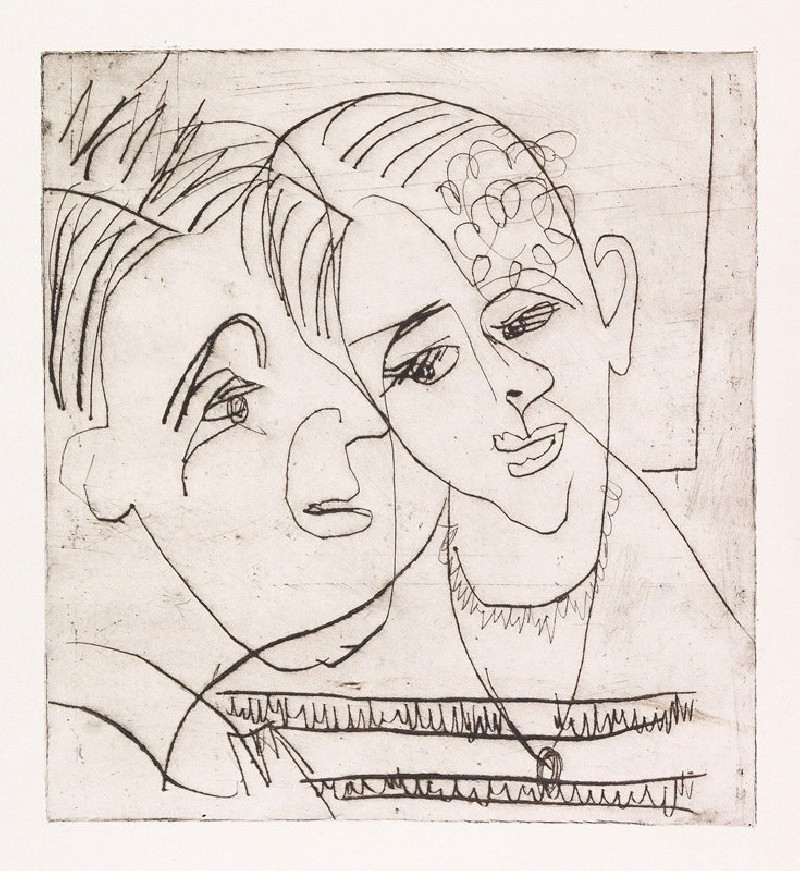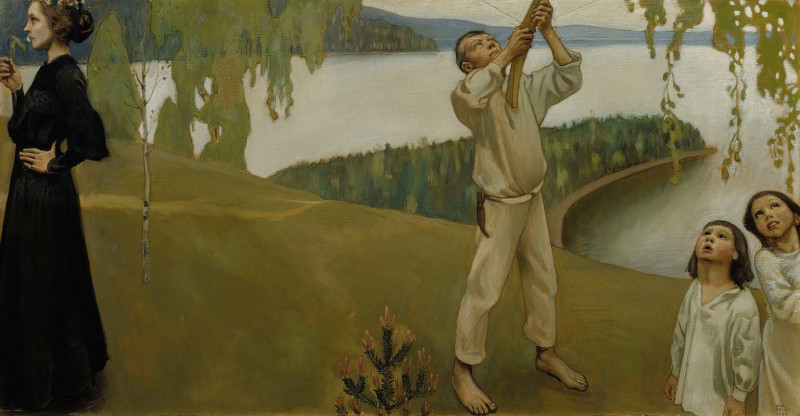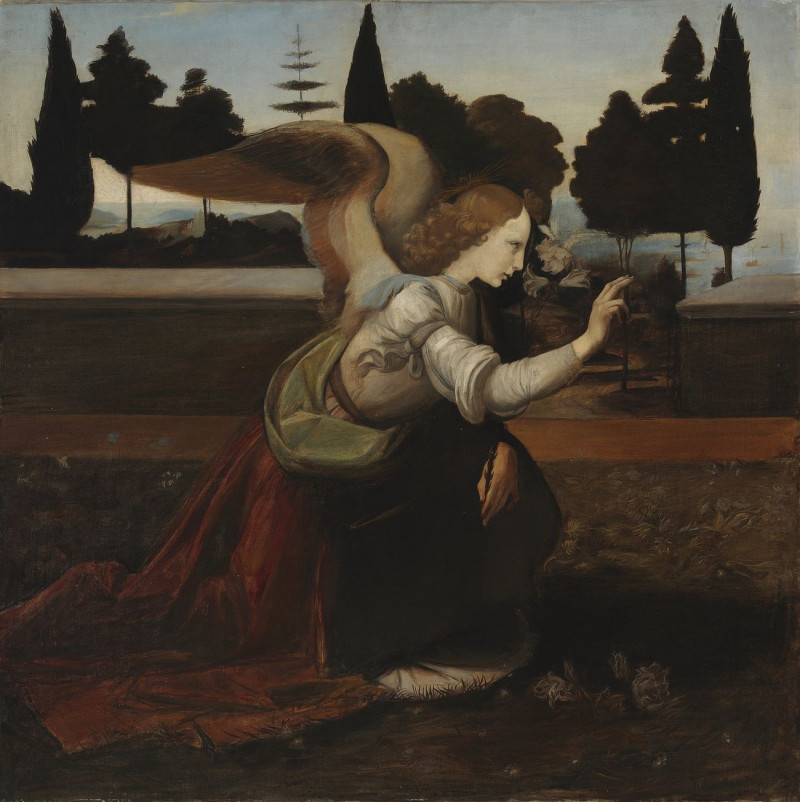The Curious Little Girl (1860–64)
Technique: Giclée quality print
Recommended by our customers
More about this artwork
The painting "The Curious Little Girl" by Jean-Baptiste-Camille Corot, crafted between 1860 and 1864, captures a moment of innocent curiosity in a pastoral setting. In this evocative piece, a young girl stands in a vast landscape, her body slightly turned as if caught mid-twist towards an unseen object of her attention. Her pose suggests movement and intrigue, her arms held up delicately, perhaps in playful imitation or gentle balance.Corot's mastery in landscape painting comes through in the subdued colors and soft brushstrokes that background the central figure. The earthy tones of the field and the muted greens of distant trees create a gentle, almost melancholic atmosphere, typical of Corot's work. The sky, a subtle blend of blues and grays, adds a sense of depth and openness to the composition.The girl’s attire, a dark voluminous dress with a light blue sash, reflects the fashion of the period, providing a touch of vivid color against the softer background. Her facial expression, detailed and introspective, draws viewers into her world, inviting them to ponder what has captured her gaze.
Delivery
Returns
Jean-Baptiste-Camille Corot was a French landscape and portrait painter as well as a printmaker in etching. He is a pivotal figure in landscape painting and his vast output simultaneously references the Neo-Classical tradition and anticipates the plein-air innovations of Impressionism.


